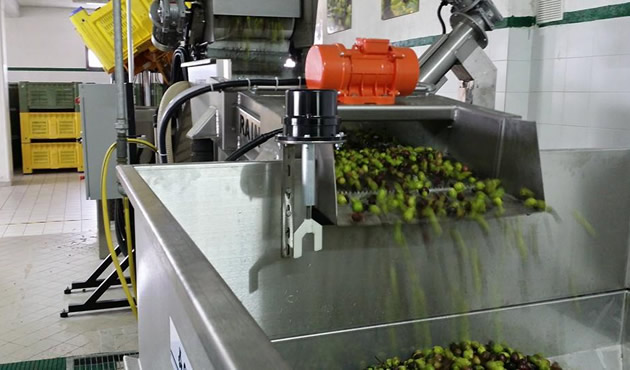Processing Stages

The processing cycle to obtain olive oil can be summarized in 7 essential stages: harvest, washing, milling, kneading, centrifugation, storing and bottling.
1. The olives, initially transported in appropriated polyethylene containers, are dropped in the hopper, from where, with a conveyor belt, they pass in the defoliator’s range which eliminates leaves and branches.
2. The olives are then washed in the washing tank, and are drained through water draining.
3. Milling is the very first oil extraction stage. Through a second belt, the washed olives are first grind by granite grinders and the paste obtained is then grind, with a regular granulometry, by a mechanical grinder.
4. The next stage is the kneading of the paste, so to aggregate the oil micro-drops in the paste through a continuous mixing between 20-27°C, for no longer than 60 minutes.
5. Once done, the paste goes in a horizontal spinner, known as decanter, that through the rotation of the drum, separates the paste in three parts: the virgin olive pomace, which goes in its process implant to become pomace oil and combustible, the vegetation water that is used as an agricultural fertilizer, and the oil must. The latter is sent to a separation vertical spinner, that removes the last solid residuals.
6. The oil obtained can then be stored in stainless steel tanks with nitrogen implants, appropriately stored in an air conditioned room to preserve the organoleptic and chemical properties of the product.
7. After an appropriate filtration, the oil can be sent to the last stage of the process, the bottling stage comprised of a blower, a beak filler, a front-rear label maker and a corking machine.

